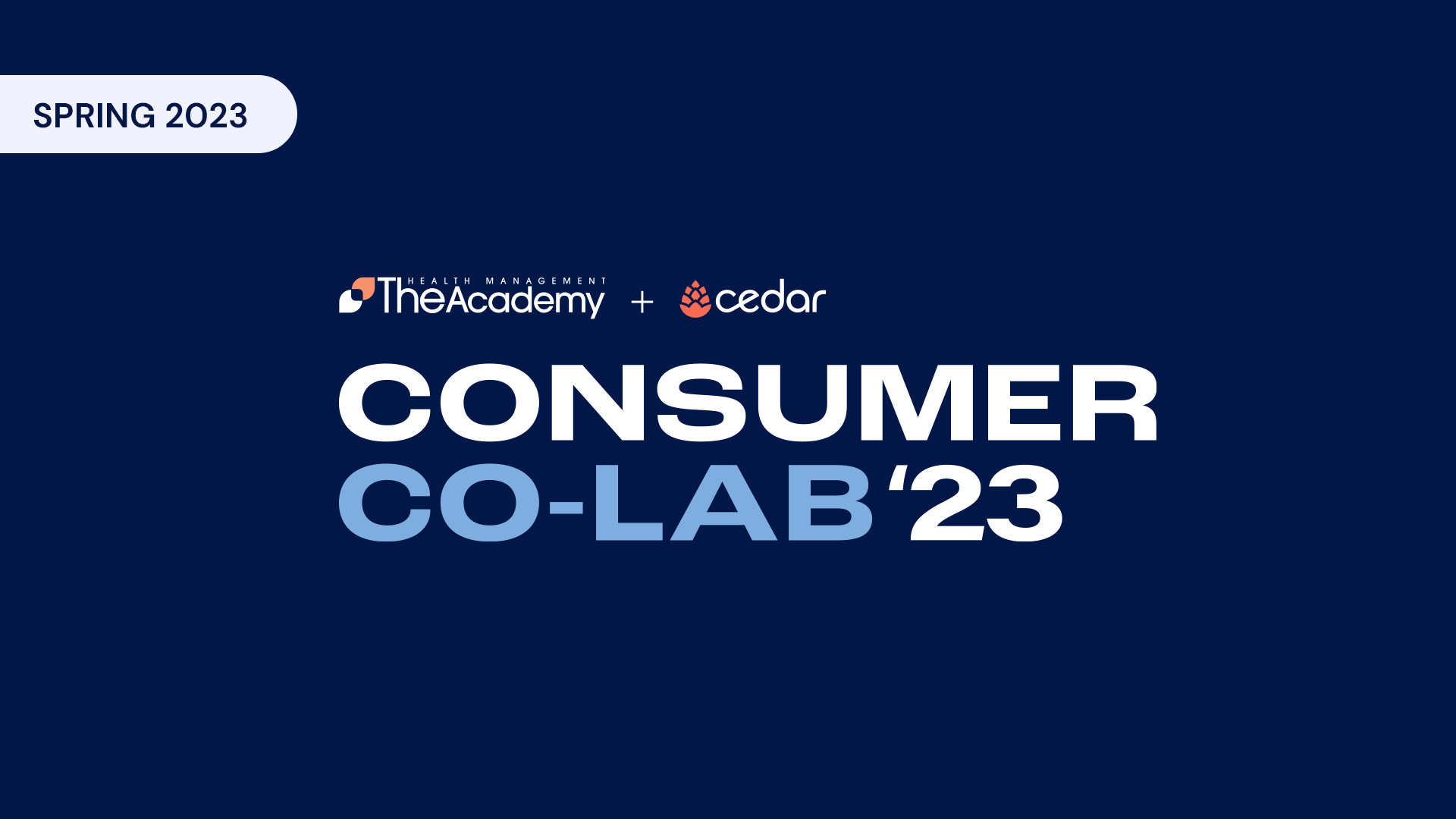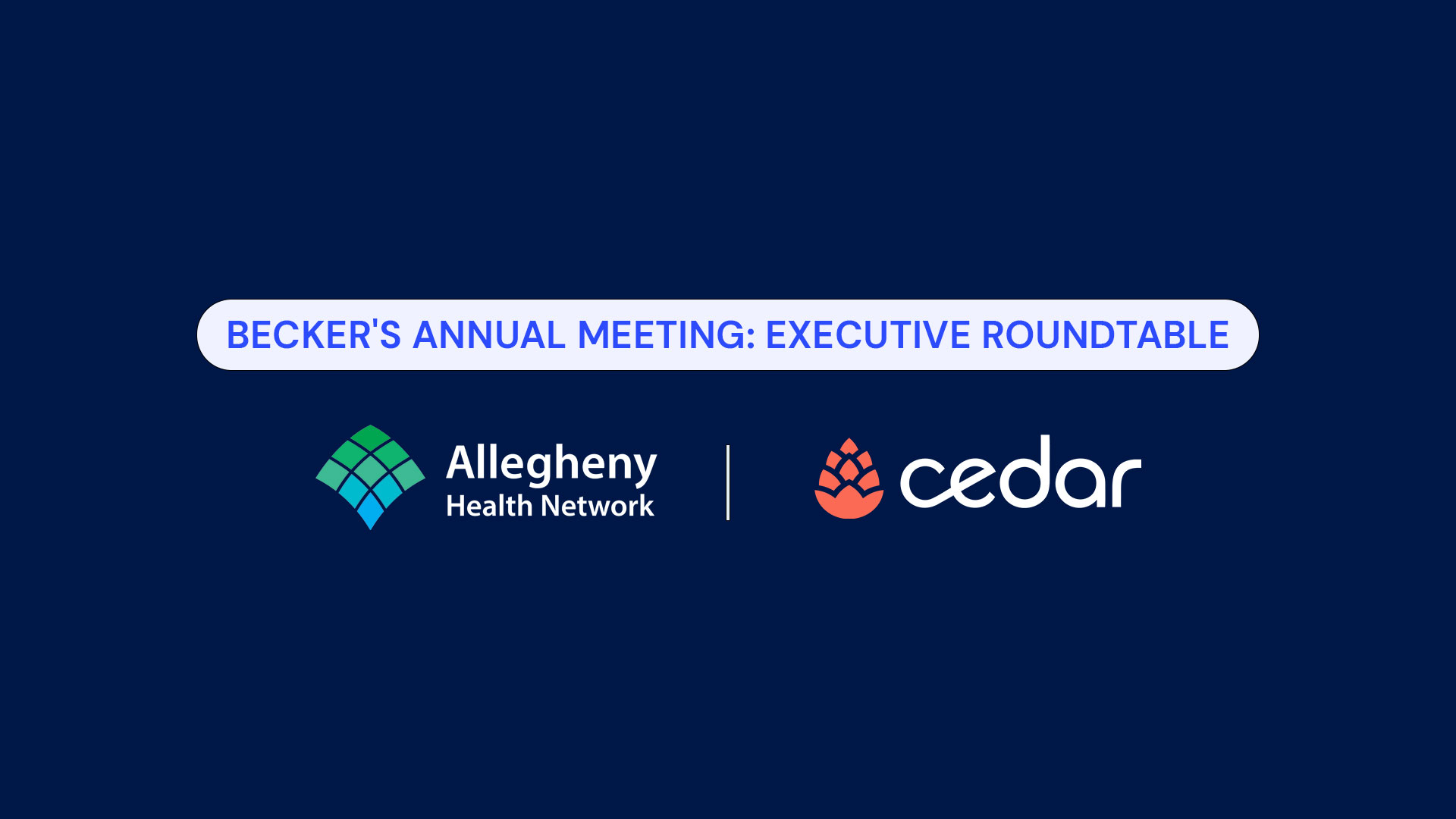Last week, healthcare leaders and professionals from around the country descended upon New Orleans for MGMA19 | The Annual Conference. The four-day event centered around the theme of “Igniting Excellence,” and attendees coalesced to learn, network, and explore issues at the leading edge of medical practice management.
In line with the conference’s overarching theme, there were a number of interactive “Spark Sessions” designed to facilitate peer-to-peer learning. Cedar co-founder and CEO Florian Otto, M.D. led one of these sessions and focused on how personalizing the patient financial experience can help drive high revenue cycle performance and improve patient satisfaction.
A Means to Bill Resolution
Early on in the discussion, it became clear that many of the attendees faced similar challenges in their organizations. When Otto touched on the steady rise of patient cost-sharing, shrinking operating margins, and collection headaches, the audience seemed to nod in unison.
“We often hear about the concept of patient-centered care and we all agree that there is no ‘one-size-fits-all’ approach to medicine,” Otto mused. “Then why are we not thinking this way when it comes to patient billing? Why not personalize the patient experience beyond clinical care to achieve the best possible outcomes?”
The discussion highlighted the importance of creating consumer-like experiences in healthcare, drawing parallels to the online retail, digital entertainment and airline industries. Otto noted that not only have consumers come to expect these experiences in the digital age, but personalization can be used to drive toward improved financial and operational outcomes, including collection rate, cost to collect, resolution rate, and patient satisfaction.
“In the past, patients received their medical bills in the same format, the same cadence, and the same language. Today, there is so much data at our fingertips that can be leveraged to craft personalized experiences with the same goal in mind — to empower patients to resolve their financial obligations,” said Otto.
Personalization Made Better
The session also covered some of the innovative ways in which Cedar uses data to offer personalized experiences for patients. By marrying historical patient engagement and payment information with third-party datasets, Cedar’s technology enables providers to deliver truly tailored experiences based on an intimate understanding of patient behaviors and trends.
Elements such as outreach delivery timing, communication method, message copy, and design, amongst many others, can be tailored to a patient’s unique healthcare situation. For example, if one patient makes frequent visits to their provider and has a prime credit score, a history of full payment, and lives in a high-income zip code, the best approach may be to request the full balance up front. But let’s say another individual is a true self-pay patient who happens to be a millennial with a history of non-payment and a large bill. Perhaps a better approach would be to offer them a self-select payment plan or discount.
Ultimately, it became clear through this Spark session that in this time of rising healthcare costs and heightened consumer demand regarding digital experiences, healthcare revenue cycle leaders play a critical role. Fortunately, there are opportunities within reach for modern technology and a personalized engagement model to optimize the patient experience while driving improved profitability.
To discover how Cedar helps providers boost collection rates by 30% and achieve 95% patient satisfaction through data-driven personalization, click here to speak with one of our experts today.



